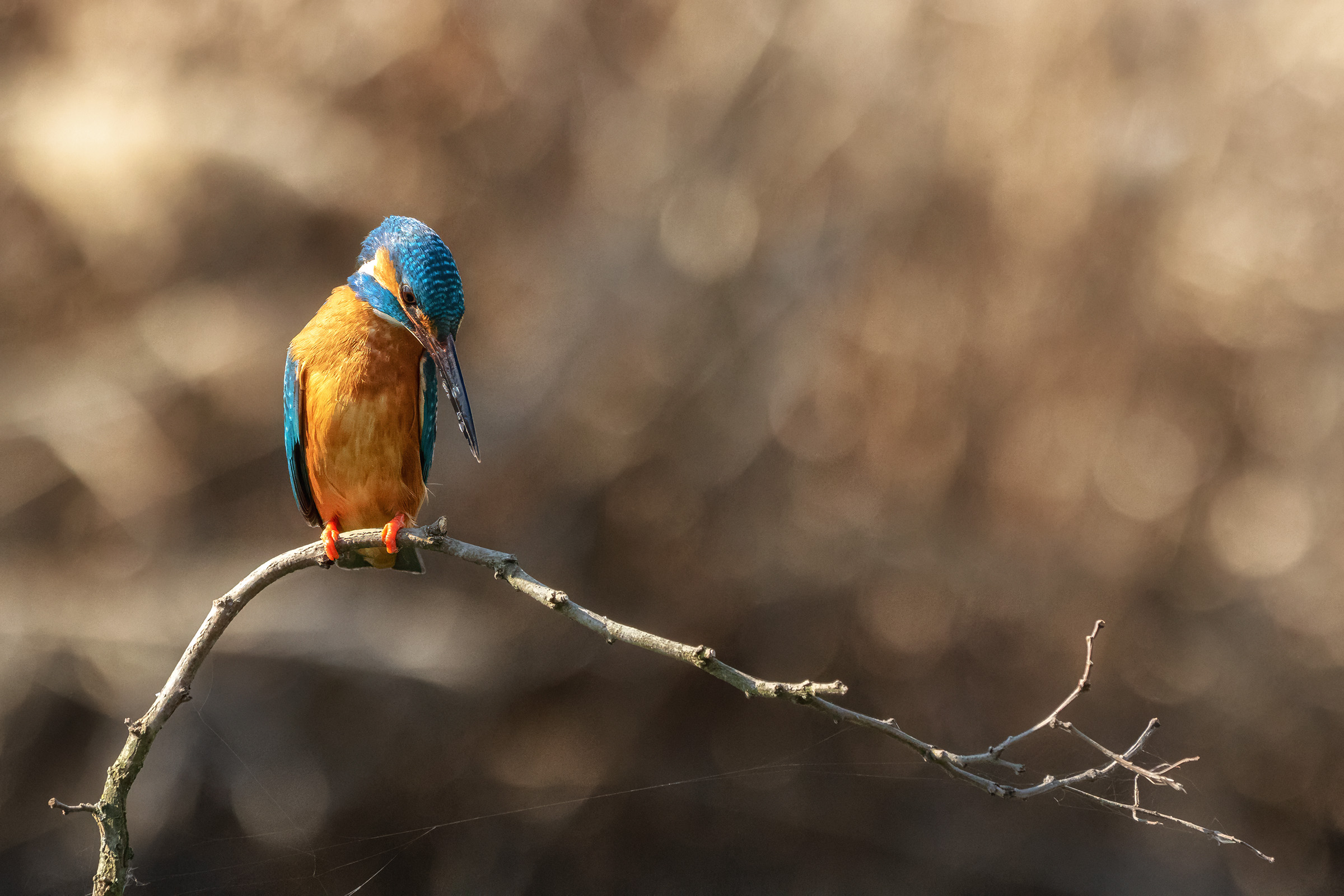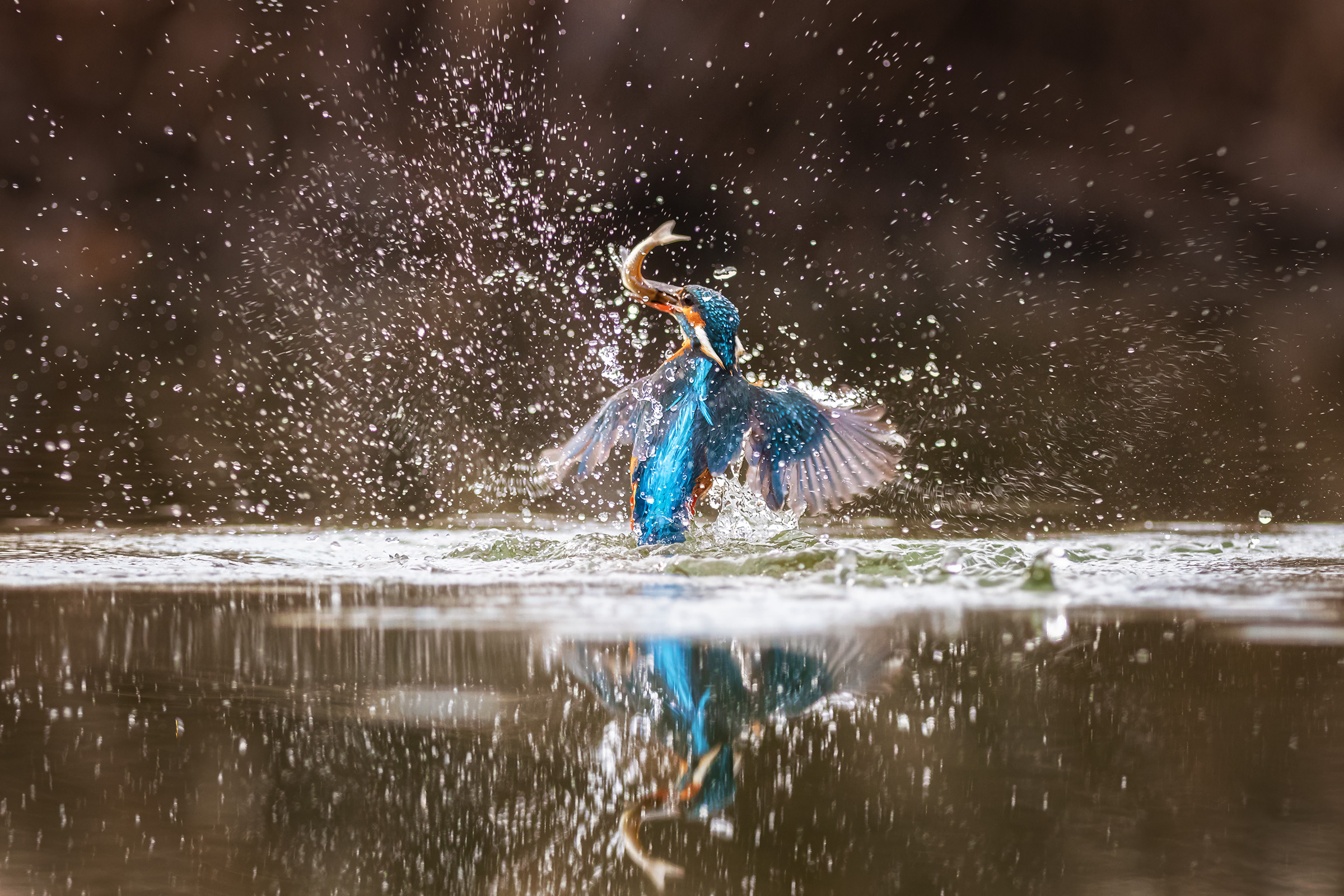There’s a moment in wildlife photography that feels almost mythical—the split second when a kingfisher pierces the water like an arrow, emerging triumphantly with a glistening fish in its beak. Photographing a kingfisher in this precise, breathtaking action is the ultimate dream for nature photographers. But achieving it is no small feat. It demands patience, skill, and an unbreakable connection with the bird’s world.
A Day in the Hide – The Journey Begins
One Friday in early March, I decided to take on the challenge of photographing a kingfisher. Inspired by the breathtaking shots I had seen from other photographers, I was eager to capture this small, vibrant bird in action. Little did I know how much technique, patience, and precision lay behind those seemingly effortless images.
With my gear packed and anticipation running high, I arrived at the hide just before 8 AM. The plan was to stay until late afternoon, allowing ample time to observe, learn, and hopefully photograph the perfect dive.
Photographing a Kingfisher - The Hide
The hide was a small, unheated wooden hut, yet it was the ideal place for photographing a kingfisher in its natural habitat. Inside, there was a unique baiting mechanism—an ingenious pedal system connected to a submerged bait bucket via a Bowden cable. Pressing the pedal would lower the bucket beneath the water, making it invisible in the frame, ensuring natural-looking shots. When released, the bucket resurfaced, keeping the small fish inside for another attempt.
The hide’s windows were strategically placed: an upper row for a comfortable seated view and a lower row, perfectly aligned with the water’s surface, offering a more immersive angle. The setup was perfect. Now, all I needed was the kingfisher.
The Kingfisher – A Jewel in Motion
A flash of electric blue and fiery orange streaked across the water - the kingfisher had arrived. Seeing it in person, I was mesmerized by its vivid plumage, a living gemstone against the muted tones of early spring.

Kingfishers are incredibly fast hunters. When diving, they pierce the water like an arrow, sending droplets flying in all directions. Capturing this moment required more than just quick reflexes - it demanded preparation, timing, and a deep understanding of the bird’s behavior.
Interestingly, colder weather increases the chances of the kingfisher returning to the bait. As temperatures rise, fish become more active, spreading out across the water, making the bait less attractive. Luckily, the day was cool enough for the kingfisher to keep coming back, allowing me to document not only its elegant dives but also some stunning portraits.
The Gear – Tools of the Trade for Photographing a Kingfisher
Photographing a kingfisher is no easy feat - it demands precision, speed, and the right equipment. Ideally, you need a camera capable of high-speed continuous shooting. Unfortunately, my Canon EOS 750D wasn't the fastest. It could only fire off about 6-7 shots before the buffer filled up, further limited by the memory card’s speed. This was frustrating, especially when the bird’s dive happened in the blink of an eye.
For the lens, I relied on my 70-200mm, which provided decent reach. With my APS-C sensor's 1.6x crop factor, more focal length is available. I did not need the 2x adapter.

Shutter speed was critical. To freeze the movement of water droplets and the rapid dive, I set my shutter speed between 1/2500 and 1/4000. I opted for 1/4000 to ensure razor-sharp images. Autofocus, however, was unreliable. With the kingfisher moving so fast, my best bet was to pre-focus on the edge of the bait bucket and switch to manual focus. If I had relied on autofocus, most of my shots would have been slightly off, ruining the crispness of the action.
When photographing a kingfisher, a sturdy tripod was essential, especially one that could be lowered to ground level. The hide was cleverly designed with lower windows for shooting right at the water’s surface, giving an intimate and dynamic perspective of the dive.
Despite the technical limitations of my setup, I embraced the challenge, knowing that the perfect shot wasn't just about equipment but also about patience and strategy.
The Magic of the Moment – Capturing the Dive
Hours passed in anticipation, my eyes locked on the still water, waiting for that electric burst of color. Then, in a heartbeat, it happened.
The kingfisher hovered for a split second, its sharp gaze locked onto the prey below. Without warning, it plunged - a streak of blue slicing through the surface, water exploding in all directions. My heart pounded as I hit the shutter, the camera rattling off shots as fast as it could. The bird emerged, a tiny fish clasped in its beak, droplets cascading from its feathers in the golden afternoon light.
In that moment, time seemed to stop. I had captured the essence of the hunt—the grace, the power, the split-second precision that makes photographing a kingfisher so exhilarating.

Reflections – The Beauty of the Chase
As the light began to fade, I reviewed my shots, feeling a deep sense of fulfillment. Not every photo was perfect, but the experience itself was priceless. Spending an entire day immersed in the bird’s world, witnessing its habits, and learning the subtle art of wildlife photography was worth every second.
Photographing a kingfisher isn't just about getting the shot—it’s about the patience, the stillness, the connection with nature. It’s about learning to anticipate movement, to respect the subject, and to appreciate the fleeting beauty of each moment.
As I packed up and stepped out of the hide, the crisp evening air filled my lungs, and I smiled. I knew I'd be back. The perfect dive was still out there, waiting for me.
Photographing a Kingfisher - Final Thoughts
If you're thinking about photographing a kingfisher, be prepared for a challenge. But trust me - when you finally capture that perfect shot, it will all be worth it. The kingfisher is a symbol of patience and precision, and in the process of chasing it, you might just find yourself embracing those same qualities.
So set up your hide, dial in your settings, and get ready for the chase of a lifetime.
Special Thanks
Special thanks go to the organizer and hide builder István Gerő and madartanya.hu.
If you’re as captivated by this topic as I am, don’t miss out on exploring more insights in my other topics and contents in my Portfolio!

